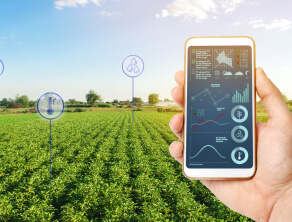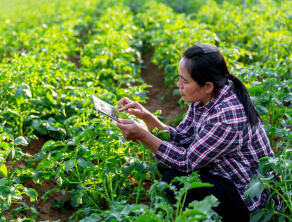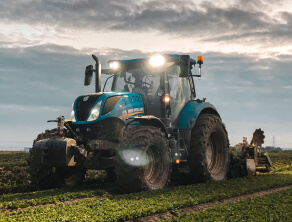Harnessing Generative AI in Agriculture: A Game-changer for Agri-tech Growth.

Introduction
As the world continues to experience unprecedented technological advancements, one domain that has seen impressive strides is agriculture. More precisely, the integration of generative AI in agriculture has unlocked new avenues for growth in agri-tech, promising a future of smarter, more efficient farming. In this article, we will explore how generative AI drives growth in agri-tech and what it holds for the future of agriculture.
Generative AI in Agriculture: A Revolution in the Making
Generative AI, a branch of artificial intelligence, involves algorithms that use data to generate something new. This could mean creating models to predict crop yield, optimize irrigation, or determine the most suitable crop varieties for specific agricultural conditions. By leveraging generative AI in agriculture, we can make farming more efficient, productive, and sustainable.
Also read: Revolutionizing Agriculture: The Role of AI and Machine Learning in Smart Farming.

Driving Agri-Tech Growth: The Role of Generative AI
The introduction of generative AI in agriculture has led to significant improvements and growth in the agri-tech sector. Let’s dive into how it does so.
- Predictive Analytics: Generative AI models can learn from vast datasets, including weather patterns, soil conditions, and crop health data, to predict future outcomes accurately. These insights can help farmers make informed decisions, leading to increased crop yields and profitability.
- Precision Agriculture: Precision farming, made possible through generative AI, allows farmers to manage their fields on a micro-scale, maximizing efficiency and reducing waste. This approach can lead to cost savings, improved yields, and minimal environmental impact.
- Supply Chain Optimization: Generative AI in agriculture isn’t confined to the fields. It also optimizes supply chains, creating models that predict demand and supply, helping reduce wastage and improving market responsiveness.
- Crop Breeding: One of the most exciting applications of generative AI in agriculture is crop breeding. AI algorithms can predict the genetic combinations that would result in desired crop traits, accelerating the breeding process and ultimately leading to more resilient, high-yielding crop varieties.
Generative AI: Shaping the Future of Agri-tech
Integrating generative AI in agriculture opens up possibilities for the agri-tech sector. By harnessing AI’s power, we can develop more effective strategies to tackle significant agricultural challenges like climate change, population growth, and food security.
Moreover, we can expect even more sophisticated solutions as AI technology evolves. We could see AI systems that autonomously manage entire farms, from sowing to harvesting, drastically reducing the need for manual labor and increasing efficiency.
To conclude, generative AI in agriculture has tremendous potential to drive growth in agri-tech, revolutionizing how we approach farming. By embracing this technology, we can work towards a more productive, sustainable, and resilient agricultural sector that can cater to our planet’s growing needs.
Key Takeaways:
- Generative AI in agriculture is revolutionizing the agri-tech sector, enabling predictive analytics, precision farming, supply chain optimization, and advanced crop breeding.
- The use of generative AI in agriculture has the potential to increase crop yields, profitability, and sustainability in the farming sector.
- The future of agri-tech lies in the further integration of generative AI, with possibilities ranging from autonomous farm management to more advanced crop breeding.
Also read: Unlocking The Future of Farming with Smart Drones in Agriculture.
![Blog-[x]cube LABS](https://d6fiz9tmzg8gn.cloudfront.net/wp-content/uploads/2016/06/blog_banner.jpg)






